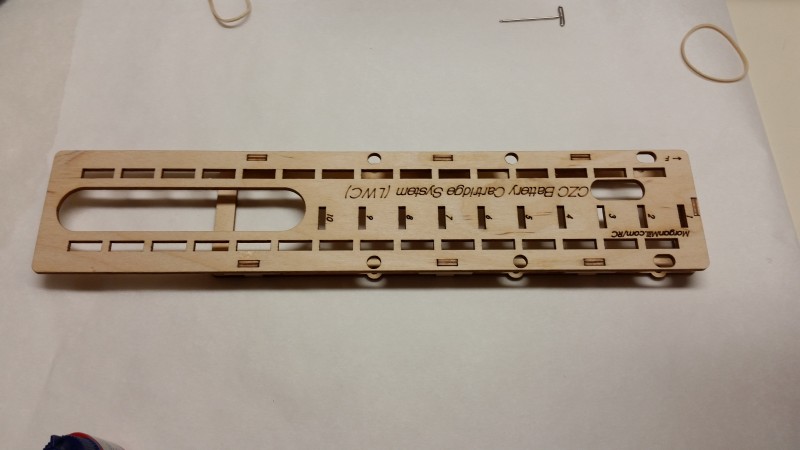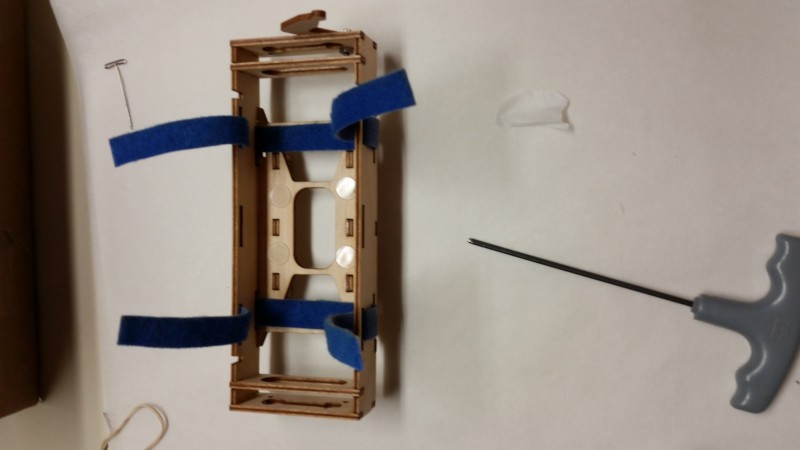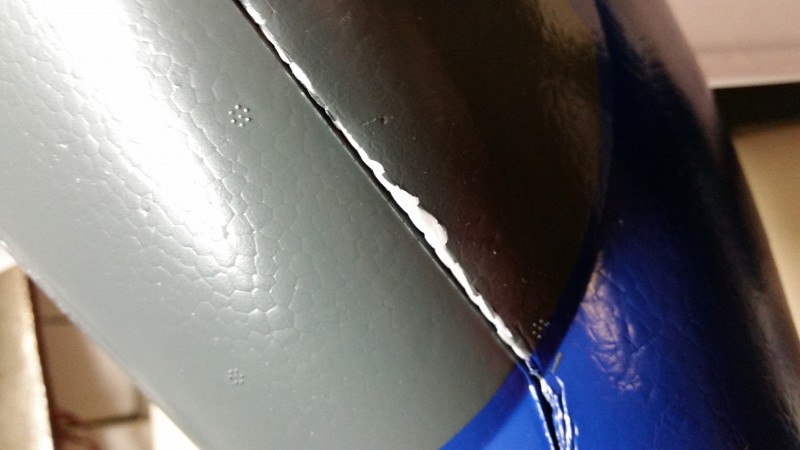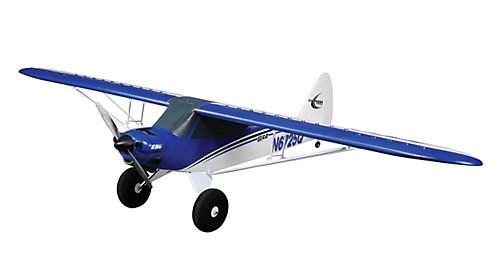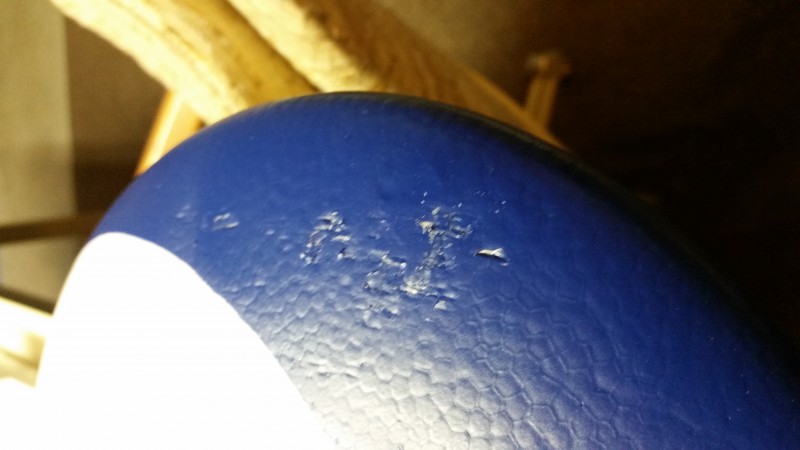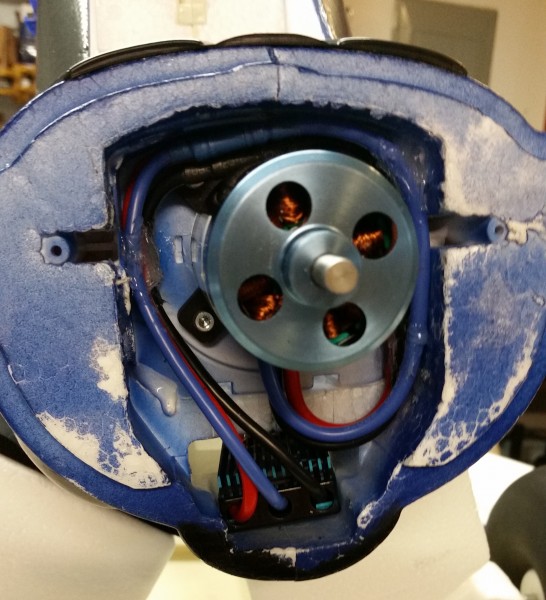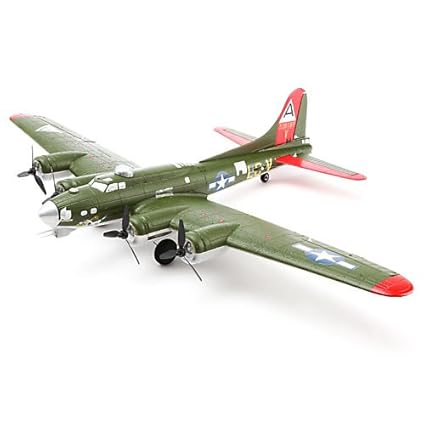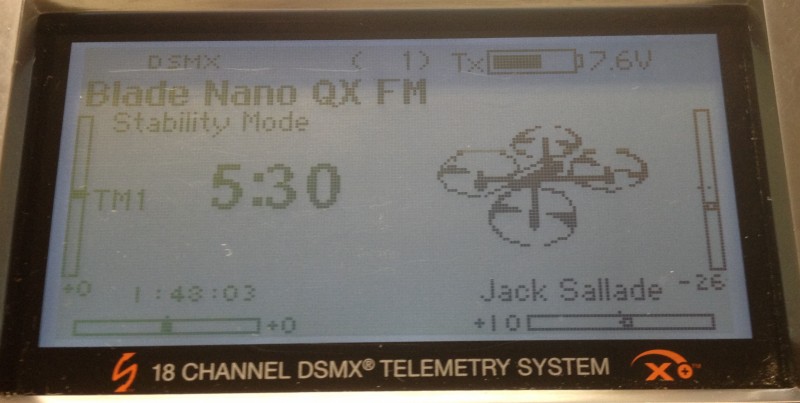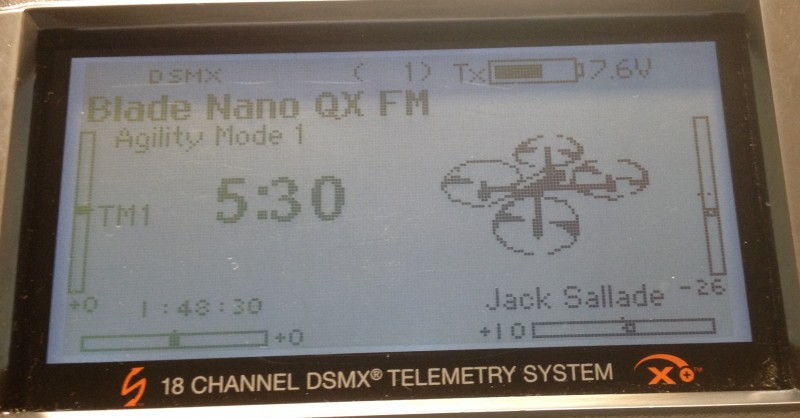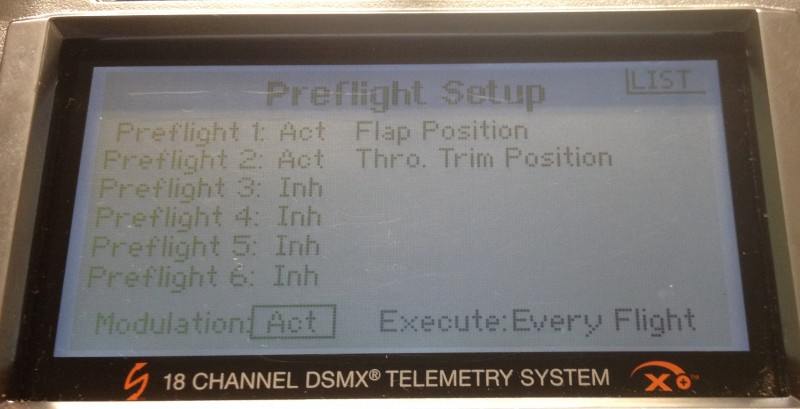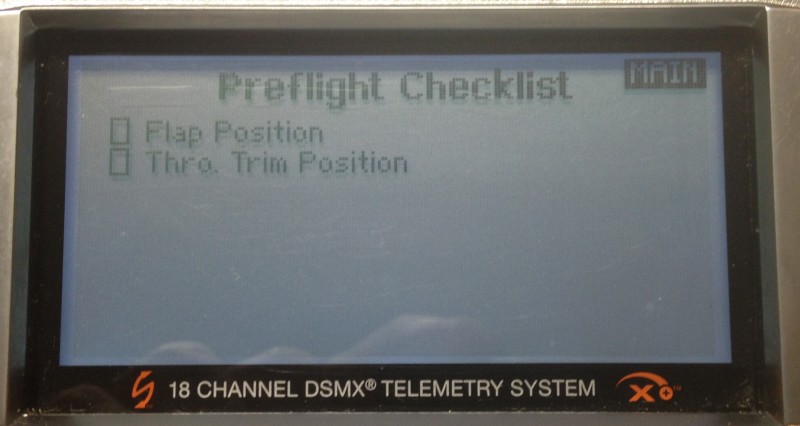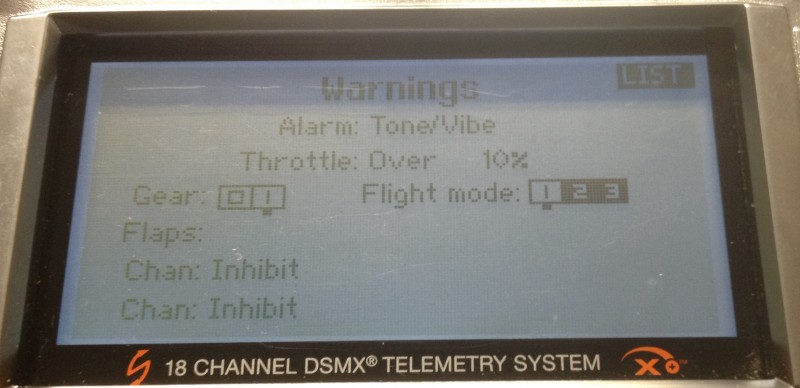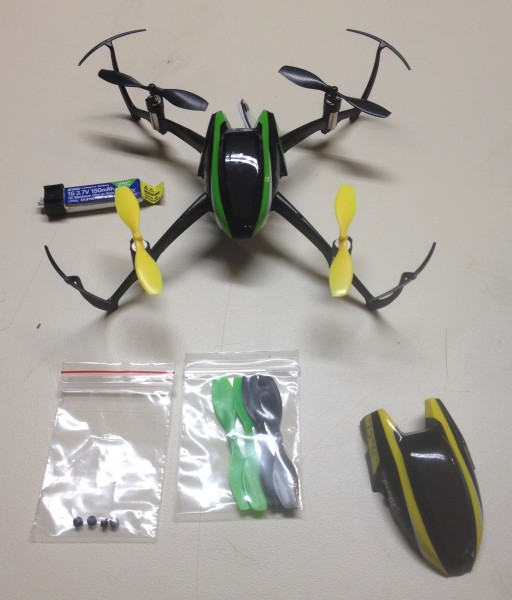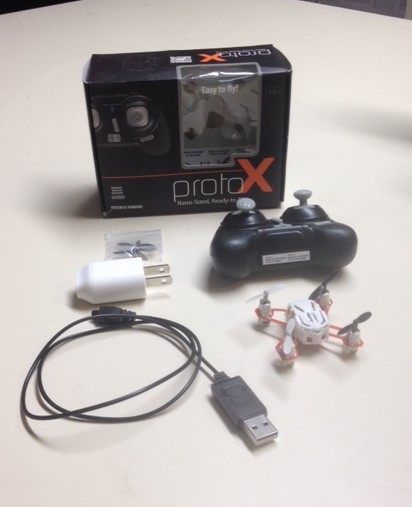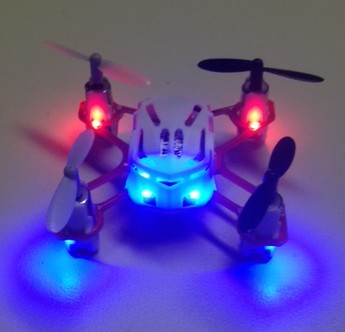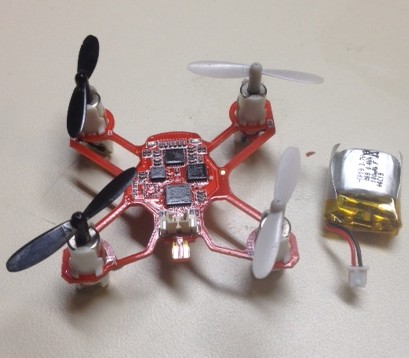I’ve spent a fair amount of time scouring the forums and am currently up to about page 400 in the 1000+ page discussion of the E-Flite Carbon-Z cub on RC Groups. If you care to read all about it click here. Just to be clear, the cub doesn’t necessarily NEED any modification to fly well. It appears quite capable and fun to fly right out of the box but I’m one to “tweak” a bit on every plane in order to get a bit more out of the plane, increase the fun factor and hopefully the life of the airplane.
Using input from the discussion group and based on my own experience with this model as well as others, here are three areas where I’ve made changes to the airplane so far.
1. I continue to be disappointed with the paint. Just normal handling, battery insertion, etc.. has caused 3 or 4 areas of paint flaking off already. My first step in combating this was to head to the local home improvement store and get computer matched blue and gray, satin, interior house paint samples. Each is a half pint (probably a lifetime supply barring drying up) and cost is only about $3. It was suggested to take the two hatches in to have them computer matched… but of course I forgot and left them at home so had to find the pictures in the forum on my smart phone and have them mixed off the numbers on the labels that someone was kind enough to post. I suggest you do your own computer match instead as that has a better chance of exact matches to the paint on your cub but mine came out excellent… I was lucky. Using this paint I have already touched up 4 spots on the cub and other than a very small difference in “sheen” I’d say it is an excellent match. It does take two coats of blue to get the color perfect over bare foam. Also, it does look bright when you apply it but after drying it is a great match.
2. Bought and static tested an APC 15×6 E prop which has received some good reviews on line… Static tests indicate that a full charged stock E-Flite 3200 6S 30C pack with the stock 15×5.5 propeller is drawing 59 Amps right off charge. The cells sag to maybe 20V which equates to about 1200 Watts. 1200 Watts with a sub 9lb airframe equates to ~133 Watts per lb. For a cub… that is somewhere between high and rocket powered! In addition, 59 Amps is just under the 60A continuous rating of the speed controller and well under the 75A peak allowed so all is well with this setup. Static testing of the new APC propeller had it pulling only 54 Amps. Flight testing and perhaps some static thrust measurements will be interesting. If the APC can produce as much thrust as the stock setup and use less amps it would prove that it is simply a more efficient airfoil… If it does not produce equal or better power than I may stay with the stock prop for at least a while longer. Stay tuned on this one. Propellers are often a quick and easy upgrade and this test so far proves that you cannot use diameter and pitch measurements to compare propellers across brands. The airfoil design is key and the listed measurements from the manufacturer are to be taken with a grain of salt.
3. I purchased some DuBro 6″ inflatable tires to replace to stock foam tires. The stock tires are considered by most to be acceptable for grass fields only. I don’t even really like them on grass as they seem to have almost zero cushioning capability and the heavy wire landing gear is mounted into foam and plastic which seems like a possible weak spot. In order to protect that mounting, I am going to try the DuBro wheels with minimal air pressure. They are almost 3/4 of a pound heavier than stock so I will lose a little power/weight ratio but I can compensate somewhat by keeping to smaller battery packs (folks are running up to 5500 mah packs… so far I’m staying with 3300-3700).
I’m considering quite a few other additions, modifications, updates, etc. that I’ll discuss as I decide on and implement them. Most likely there will be telemetry installed as well as some personalization of the color scheme, flap/elevator mix testing, and more.
Right now I’m getting prepared to go flying on new years day which is currently being predicted to be a balmy 20-25 degrees(F) and 10-15mph winds… First to explore is whether I can get the Cub into the trailer fully assembled to avoid freezing fingers having to assemble in the cold!
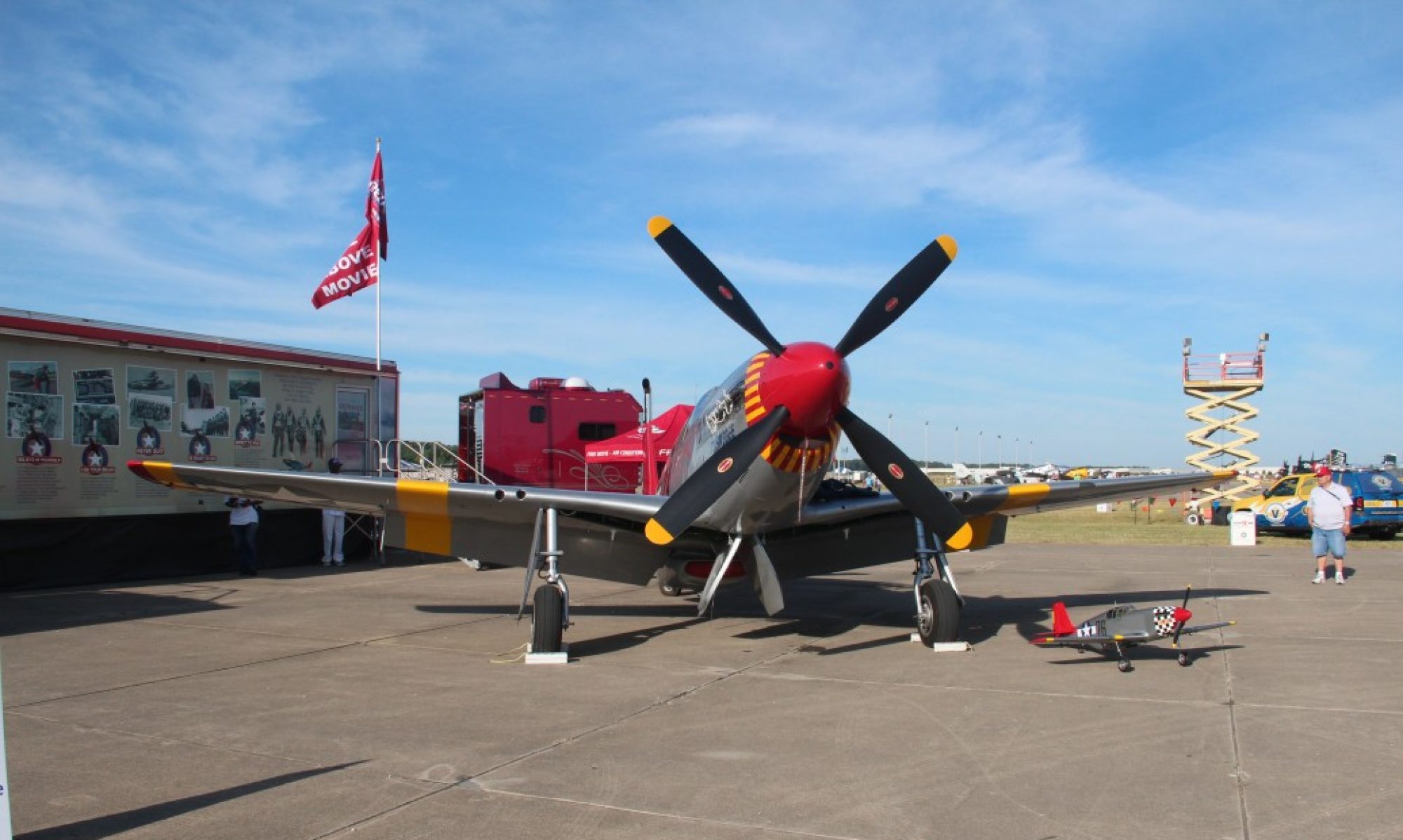

![hrcp4212[1]](http://flyrc.info/wp-content/uploads/2014/12/hrcp42121.jpg)
